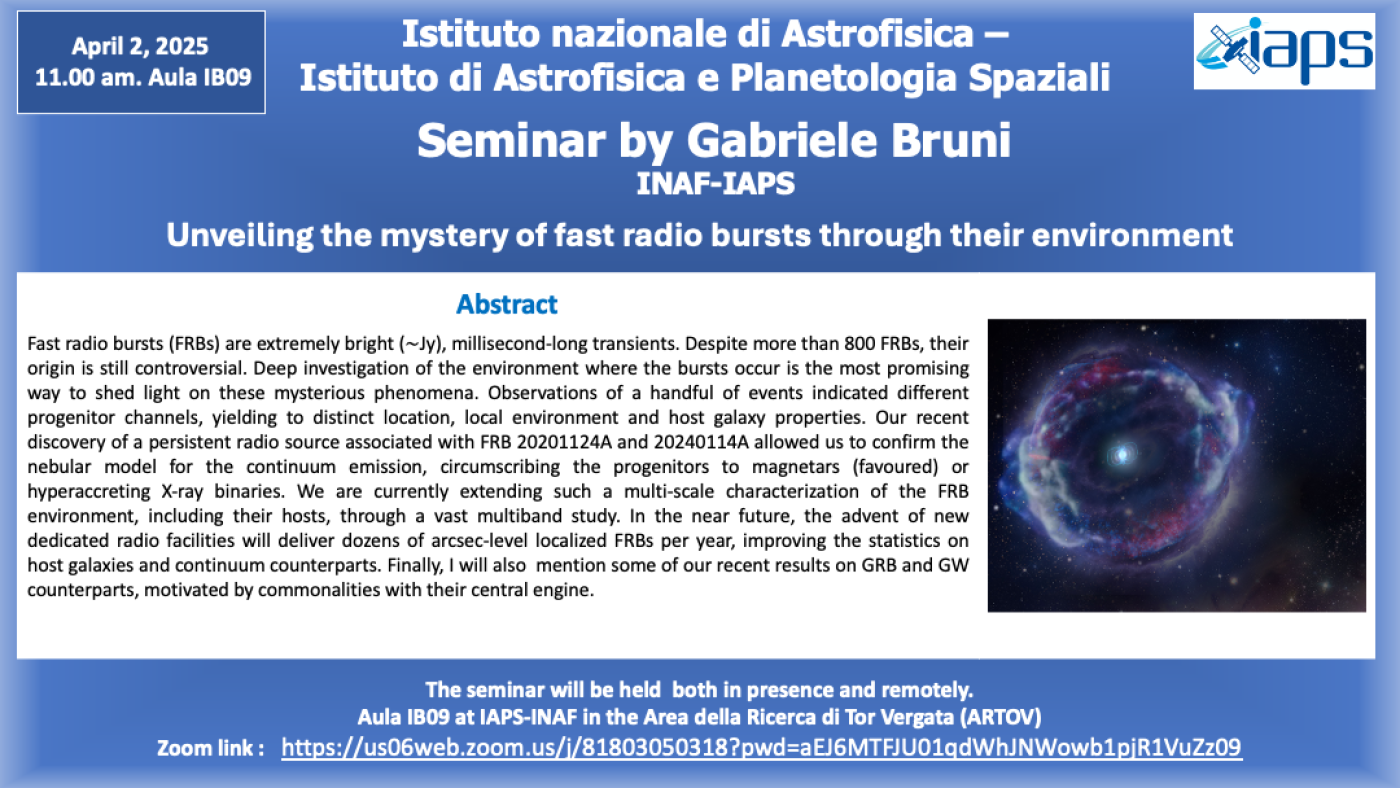Unveiling the mystery of fast radio bursts through their environment
Affiliation: INAF-IAPS

Abstract: Fast radio bursts (FRBs) are extremely bright (∼Jy), millisecond-long transients. Despite more than 800 FRBs, their origin is still controversial. Deep investigation of the environment where the bursts occur is the most promising way to shed light on these mysterious phenomena. Observations of a handful of events indicated different progenitor channels, yielding to distinct location, local environment and host galaxy properties. Our recent discovery of a persistent radio source associated with FRB 20201124A and 20240114A allowed us to confirm the nebular model for the continuum emission, circumscribing the progenitors to magnetars (favoured) or hyperaccreting X-ray binaries. We are currently extending such a multi-scale characterization of the FRB environment, including their hosts, through a vast multiband study. In the near future, the advent of new dedicated radio facilities will deliver dozens of arcsec-level localized FRBs per year, improving the statistics on host galaxies and continuum counterparts. Finally, I will also mention some of our recent results on GRB and GW counterparts, motivated by commonalities with their central engine.


